Geographic Information Systems (GISs) Based on WebGIS Architecture: Bibliometric Analysis of the Current Status and Research Trends
Abstract
:1. Introduction
2. Background
- presenting detailed bibliometric information on 391 scientific articles sourced from the Web of Science database;
- utilizing the bibliometric package R and Biblioshiny to gather and document quantitative data on a selected group of articles;
- employing variables, such as the number of authors per article and an index measuring author dominance, to identify the primary authors in this particular research field;
- conducting a citation analysis and creating collaborative maps to understand the network associated with this research area;
- evaluating countries to assess the production, citations, affiliations, and networks related to WebGIS architecture research in each country.
3. Materials and Methods
3.1. Phase 1—Study Design
3.2. Phase 2—Data Collection
3.3. Phase 3—Data Analysis
3.4. Phase 4—Data Visualization
3.5. Phase 5—Interpretation
4. Results
4.1. Descriptive Bibliometric Analysis
4.2. Authors
4.2.1. Classification of Authors’ Domains
4.2.2. Authors’ Impact
4.2.3. Authors’ Productivity
4.2.4. Author Keywords
4.3. Author Citations and Article Sources
4.4. Countries
4.4.1. Total Number of Articles per Country
4.4.2. Country Publications and Collaboration Map
4.5. Evolutionary GIS Analysis Based on Web Architecture: Main Themes and Applied Research Trends
Analysis of Emerging Priorities and Advanced Technologies in WebGIS: Thematic Clusters and Relevant Studies
5. Discussion
5.1. Implications
5.2. Limitations
6. Conclusions
Author Contributions
Funding
Data Availability Statement
Acknowledgments
Conflicts of Interest
References
- Dhurandhar, P.; Tamrakar, A.; Patra, J.P. Review on GIS-based online information system for rural development in Chhattisgarh. Int. J. Health Sci. 2022, 6, 8226–8231. [Google Scholar] [CrossRef]
- Agrawal, S.; Gupta, R.D. Web GIS and its architecture: A review. Arab. J. Geosci. 2017, 10, 518. [Google Scholar] [CrossRef]
- Li, L.; Zhu, D.; Ye, S.; Yao, X.; Li, J.; Zhang, N.; Han, Y.; Zhang, L. Design and implementation of geographic information systems, remote sensing, and global positioning system–based information platform for locust control. J. Appl. Remote Sens. 2014, 8, 084899. [Google Scholar] [CrossRef]
- Qin, R. Development of a GIS-based integrated framework for coastal seiches monitoring and forecasting: A North Jiangsu shoal case study. Comput. Geosci. 2017, 103, 70–79. [Google Scholar] [CrossRef]
- Rosatti, G.; Zorzi, N.; Zugliani, D.; Piffer, S.; Rizzi, A. A Web Service ecosystem for high-quality, cost-effective debris-flow hazard assessment. Environ. Model. Softw. 2018, 100, 33–47. [Google Scholar] [CrossRef]
- Jayawardhana, U.K.; Gorsevski, P.V. An ontology-based framework for extracting spatio-temporal influenza data using Twitter. Int. J. Digit. Earth 2019, 12, 2–24. [Google Scholar] [CrossRef]
- Auer, T.; MacEachren, A.M.; McCabe, C.; Pezanowski, S.; Stryker, M. HerbariaViz: A web-based client-server interface for mapping and exploring flora observation data. Ecol. Inform. 2011, 6, 93–110. [Google Scholar] [CrossRef]
- Gong, H.; Simwanda, M.; Murayama, Y. An Internet-Based GIS Platform Providing Data for Visualization and Spatial Analysis of Urbanization in Major Asian and African Cities. ISPRS Int. J. Geo-Inf. 2017, 6, 257. [Google Scholar] [CrossRef]
- He, H.; Zhu, W. Efficient, Customizable and Edge-Based WebGIS System. IEEE Access 2020, 8, 126164–126177. [Google Scholar] [CrossRef]
- Walter, S.H.G.; Muller, J.P.; Sidiropoulos, P.; Tao, Y.; Gwinner, K.; Putri, A.R.D.; Kim, J.R.; Steikert, R.; van Gasselt, S.; Michael, G.G.; et al. The Web-Based Interactive Mars Analysis and Research System for HRSC and the iMars Project. Earth Space Sci. 2018, 5, 308–323. [Google Scholar] [CrossRef]
- Agrawal, S.; Gupta, R.D. Development of SOA-based WebGIS framework for education sector. Arab. J. Geosci. 2020, 13, 563. [Google Scholar] [CrossRef]
- Yang, C.; Raskin, R.; Goodchild, M.; Gahegan, M. Geospatial Cyberinfrastructure: Past, present and future. Comput. Environ. Urban Syst. 2010, 34, 264–277. [Google Scholar] [CrossRef]
- Evangelidis, K.; Ntouros, K.; Makridis, S.; Papatheodorou, C. Geospatial services in the Cloud. Comput. Geosci. 2014, 63, 116–122. [Google Scholar] [CrossRef]
- Hu, K.; Gui, Z.; Cheng, X.; Wu, H.; McClure, S.C. The concept and technologies of quality of geographic information service: Improving user experience of giservices in a distributed computing environment. ISPRS Int. J. Geo-Inf. 2019, 8, 118. [Google Scholar] [CrossRef]
- Zhang, M.; Jiang, L.; Yue, P.; Gong, J. Interoperable web sharing of environmental models using OGC web processing service and Open Modeling Interface (OpenMI). Environ. Model. Softw. 2020, 133, 104838. [Google Scholar] [CrossRef]
- Kolb, J.P. Using web services to work with Geodata in R. R J. 2019, 11, 6–23. [Google Scholar] [CrossRef]
- Jing, C.; Zhu, Y.; Fu, J.; Dong, M. A lightweight collaborative GIS data editing approach to support urban planning. Sustainability 2019, 11, 4437. [Google Scholar] [CrossRef]
- Hou, Z.W.; Qin, C.Z.; Zhu, A.X.; Liang, P.; Wang, Y.J.; Zhu, Y.Q. From manual to intelligent: A review of input data preparation methods for geographic modeling. ISPRS Int. J. Geo-Inf. 2019, 8, 376. [Google Scholar] [CrossRef]
- Aturinde, A.; Rose, N.; Farnaghi, M.; Maiga, G.; Pilesjö, P.; Mansourian, A. Establishing spatially-enabled health registry systems using implicit spatial data pools: Case study-Uganda. BMC Med. Inform. Decis. Mak. 2019, 19, 215. [Google Scholar] [CrossRef] [PubMed]
- Mete, M.O.; Yomralioglu, T. Implementation of serverless cloud GIS platform for land valuation. Int. J. Digit. Earth 2021, 14, 836–850. [Google Scholar] [CrossRef]
- Locati, M.; Vallone, R.; Ghetta, M.; Dawson, N. QQuake, a QGIS Plugin for Loading Seismological Data from Web Services. Front. Earth Sci. 2021, 9, 614663. [Google Scholar] [CrossRef]
- Xing, H.; Chen, J.; Wu, H.; Hou, D. A web service-oriented geoprocessing system for supporting intelligent land cover change detection. ISPRS Int. J. Geo-Inf. 2019, 8, 50. [Google Scholar] [CrossRef]
- Iosifescu-Enescu, I.; Hugentobler, M.; Hurni, L. Web cartography with open standards—A solution to cartographic challenges of environmental management. Environ. Model. Softw. 2010, 25, 988–999. [Google Scholar] [CrossRef]
- Hamilton, M.C.; Nedza, J.A.; Doody, P.; Bates, M.E.; Bauer, N.L.; Voyadgis, D.E.; Fox-Lent, C. Web-based geospatial multiple criteria decision analysis using open software and standards. Int. J. Geogr. Inf. Sci. 2016, 30, 1667–1686. [Google Scholar] [CrossRef]
- Kulawiak, M.; Kulawiak, M.; Lubniewski, Z. Integration, processing and dissemination of LiDAR data in a 3D web-GIS. ISPRS Int. J. Geo-Inf. 2019, 8, 144. [Google Scholar] [CrossRef]
- Razavi-Termeh, S.V.; Sadeghi-Niaraki, A.; Choi, S.M. Ubiquitous GIS-based forest fire susceptibility mapping using artificial intelligence methods. Remote Sens. 2020, 12, 1689. [Google Scholar] [CrossRef]
- Shibuya, K. A Framework of Multi-Agent-Based Modeling, Simulation, and Computational Assistance in an Ubiquitous Environment. Simulation 2004, 80, 367–380. [Google Scholar] [CrossRef]
- Puttinaovarat, S.; Horkaew, P. Internetworking flood disaster mitigation system based on remote sensing and mobile GIS. Geomat. Nat. Hazards Risk 2020, 11, 1886–1911. [Google Scholar] [CrossRef]
- Bebortta, S.; Das, S.K.; Kandpal, M.; Barik, R.K.; Dubey, H. Geospatial serverless computing: Architectures, tools and future directions. ISPRS Int. J. Geo-Inf. 2020, 9, 311. [Google Scholar] [CrossRef]
- Can, R.; Kocaman, S.; Gokceoglu, C. A convolutional neural network architecture for auto-detection of landslide photographs to assess citizen science and volunteered geographic information data quality. ISPRS Int. J. Geo-Inf. 2019, 8, 300. [Google Scholar] [CrossRef]
- Belcore, E.; Angeli, S.; Colucci, E.; Musci, M.A.; Aicardi, I. Precision agriculture workflow, from data collection to data management using FOSS tools: An application in Northern Italy vineyard. ISPRS Int. J. Geo-Inf. 2021, 10, 236. [Google Scholar] [CrossRef]
- Loupian, E.; Burtsev, M.; Proshin, A.; Kashnitskii, A.; Balashov, I.; Bartalev, S.; Konstantinova, A.; Kobets, D.; Radchenko, M.; Tolpin, V.; et al. Usage experience and capabilities of the vega-science system. Remote Sens. 2022, 14, 77. [Google Scholar] [CrossRef]
- Balla, D.; Zichar, M.; Tóth, R.; Kiss, E.; Karancsi, G.; Mester, T. Geovisualization techniques of spatial environmental data using different visualization tools. Appl. Sci. 2020, 10, 6701. [Google Scholar] [CrossRef]
- Walker, J.D.; Letcher, B.H.; Rodgers, K.D.; Muhlfeld, C.C.; D’angelo, V.S. An interactive data visualization framework for exploring geospatial environmental datasets and model predictions. Water 2020, 12, 2928. [Google Scholar] [CrossRef]
- Kalpakis, V.; Kokkos, N.; Pisinaras, V.; Sylaios, G. An integrated coastal zone observatory at municipal level: The case of Kavala Municipality, NE Greece. J. Coast. Conserv. 2019, 23, 149–162. [Google Scholar] [CrossRef]
- Gordov, E.P.; Okladnikov, I.G.; Titov, A.G.; Voropay, N.N.; Ryazanova, A.A.; Lykosov, V.N. Development of Information-computational Infrastructure for Modern Climatology. Russ. Meteorol. Hydrol. 2018, 43, 722–728. [Google Scholar] [CrossRef]
- Nguyen, H.T.; Duong, T.Q.; Nguyen, L.D.; Vo, T.Q.N.; Tran, N.T.; Dang, P.D.N.; Nguyen, L.D.; Dang, C.K.; Nguyen, L.K. Development of a spatial decision support system for real-time flood early warning in the Vu Gia-Thu Bon river basin, Quang Nam Province, Vietnam. Sensors 2020, 20, 1667. [Google Scholar] [CrossRef] [PubMed]
- Kalinka, M.; Geipele, S.; Pudzis, E.; Lazdins, A.; Krutova, U.; Holms, J. Indicators for the smart development of villages and neighbourhoods in baltic sea coastal areas. Sustainability 2020, 12, 5293. [Google Scholar] [CrossRef]
- Capolupo, A.; Monterisi, C.; Saponieri, A.; Addona, F.; Damiani, L.; Archetti, R.; Tarantino, E. An interactive webgis framework for coastal erosion risk management. J. Mar. Sci. Eng. 2021, 9, 567. [Google Scholar] [CrossRef]
- Tamburis, O.; Giannino, F.; D’Arco, M.; Tocchi, A.; Esposito, C.; Di Fiore, G.; Piscopo, N.; Esposito, L. A night at the opera: A conceptual framework for an integrated distributed sensor network-based system to figure out safety protocols for animals under risk of fire †. Sensors 2020, 20, 2538. [Google Scholar] [CrossRef] [PubMed]
- Aye, Z.C.; Jaboyedoff, M.; Derron, M.H.; Van Westen, C.J.; Hussin, H.Y.; Ciurean, R.L.; Frigerio, S.; Pasuto, A. An interactive web-GIS tool for risk analysis: A case study in the Fella River basin, Italy. Nat. Hazards Earth Syst. Sci. 2016, 16, 85–101. [Google Scholar] [CrossRef]
- Poorazizi, M.E.; Steiniger, S.; Hunter, A.J.S. A service-oriented architecture to enable participatory planning: An e-planning platform. Int. J. Geogr. Inf. Sci. 2015, 29, 1081–1110. [Google Scholar] [CrossRef]
- Langella, G.; Basile, A.; Giannecchini, S.; Moccia, F.D.; Mileti, F.A.; Munafó, M.; Pinto, F.; Terribile, F. Soil Monitor: An internet platform to challenge soil sealing in Italy. Land Degrad. Dev. 2020, 31, 2883–2900. [Google Scholar] [CrossRef]
- Li, J.; Xia, H.; Qin, Y.; Fu, P.; Guo, X.; Li, R.; Zhao, X. Web GIS for Sustainable Education: Towards Natural Disaster Education for High School Students. Sustainability 2022, 14, 2694. [Google Scholar] [CrossRef]
- Zápotocký, M.; Koreň, M. Multipurpose GIS Portal for Forest Management, Research, and Education. ISPRS Int. J. Geo-Inf. 2022, 11, 405. [Google Scholar] [CrossRef]
- Sebastián-López, M.; González, R.d.M. Mobile learning for sustainable development and environmental teacher education. Sustainability 2020, 12, 757. [Google Scholar] [CrossRef]
- Mauro, N.; Ardissono, L.; Lucenteforte, M. Faceted search of heterogeneous geographic information for dynamic map projection. Inf. Process. Manag. 2020, 57, 102257. [Google Scholar] [CrossRef]
- La Guardia, M.; Koeva, M. Towards Digital Twinning on the Web: Heterogeneous 3D Data Fusion Based on Open-Source Structure. Remote Sens. 2023, 15, 721. [Google Scholar] [CrossRef]
- Jelokhani-Niaraki, M.; Sadeghi-Niaraki, A.; Choi, S.M. Semantic interoperability of GIS and MCDA tools for environmental assessment and decision making. Environ. Model. Softw. 2018, 100, 104–122. [Google Scholar] [CrossRef]
- Huang, M.; Fan, X.; Jian, H.; Zhang, H.; Guo, L.; Di, L. Bibliometric Analysis of OGC Specifications between 1994 and 2020 Based on Web of Science (WoS). ISPRS Int. J. Geo-Inf. 2022, 11, 251. [Google Scholar] [CrossRef]
- Obeidavi, Z.; Rangzan, K.; Kabolizade, M.; Mirzaei, R. A web-based GIS system for wildlife species: A case study from Khouzestan Province, Iran. Environ. Sci. Pollut. Res. 2019, 26, 16026–16039. [Google Scholar] [CrossRef] [PubMed]
- Saka, S.K.; Mathew, A.E.; Ganesh, V.; Raja, K.; Gopalakrishnan, G.; Iyyappan, M.; Dash, S.K.; Usha, T.; Ramanamurthy, M.V.; Sameeran, G.S.; et al. A web-gis and mobile-based application for a safe ocean for fishers. Mar. Technol. Soc. J. 2021, 55, 50–57. [Google Scholar] [CrossRef]
- Schmidt, F.; Dröge-Rothaar, A.; Rienow, A. Development of a Web GIS for small-scale detection and analysis of COVID-19 (SARS-CoV-2) cases based on volunteered geographic information for the city of Cologne, Germany, in July/August 2020. Int. J. Health Geogr. 2021, 20, 40. [Google Scholar] [CrossRef] [PubMed]
- Kamel Boulos, M.N.; Cai, Q.; Padget, J.A.; Rushton, G. Using software agents to preserve individual health data confidentiality in micro-scale geographical analyses. J. Biomed. Inform. 2006, 39, 160–170. [Google Scholar] [CrossRef]
- Marx, S.; Phalkey, R.; Aranda-Jan, C.B.; Profe, J.; Sauerborn, R.; Höfle, B. Geographic information analysis and web-based geoportals to explore malnutrition in Sub-Saharan Africa: A systematic review of approaches. BMC Public Health 2014, 14, 1189. [Google Scholar] [CrossRef] [PubMed]
- Luan, H.; Law, J. Web GIS-based public health surveillance systems: A systematic review. ISPRS Int. J. Geo-Inf. 2014, 3, 481–506. [Google Scholar] [CrossRef]
- Wang, H.; Pan, Y.; Luo, X. Integration of BIM and GIS in sustainable built environment: A review and bibliometric analysis. Autom. Constr. 2019, 103, 41–52. [Google Scholar] [CrossRef]
- Shkundalov, D.; Vilutienė, T. Bibliometric analysis of building information modeling, geographic information systems and web environment integration. Autom. Constr. 2021, 128, 103757. [Google Scholar] [CrossRef]
- Duarte, L.; Teodoro, A.C. GIS Open-Source Plugins Development: A 10-Year Bibliometric Analysis on Scientific Literature. Geomatics 2021, 1, 206–245. [Google Scholar] [CrossRef]
- Xu, Z.; Zhang, L.; Li, H.; Lin, Y.-H.; Yin, S. Combining IFC and 3D tiles to create 3D visualization for building information modeling. Autom. Constr. 2020, 109, 102995. [Google Scholar] [CrossRef]
- Tuama, É.Ó.; Hamre, T. Design and Implementation of a Distributed GIS Portal for Oil Spill and Harmful Algal Bloom Monitoring in the Marine Environment. Mar. Geod. 2007, 30, 145–168. [Google Scholar] [CrossRef]
- Russomanno, D.J.; Tritenko, Y. A Geographic Information System Framework for the Management of Sensor Deployments. Sensors 2010, 10, 4281–4295. [Google Scholar] [CrossRef] [PubMed]
- Possenti, L.; Savini, L.; Conte, A.; D’Alterio, N.; Danzetta, M.L.; Di Lorenzo, A.; Nardoia, M.; Migliaccio, P.; Tora, S.; Villa, P.D. A New Information System for the Management of Non-Epidemic Veterinary Emergencies. Animals 2020, 10, 983. [Google Scholar] [CrossRef] [PubMed]
- Gröger, G.; Plümer, L. CityGML—Interoperable semantic 3D city models. ISPRS J. Photogramm. Remote Sens. 2012, 71, 12–33. [Google Scholar] [CrossRef]
- Junquera, B.; Mitre, M. Value of bibliometric analysis for research policy: A case study of Spanish research into innovation and technology management. Scientometrics 2007, 71, 443–454. [Google Scholar] [CrossRef]
- El Akrami, N.; Hanine, M.; Flores, E.S.; Aray, D.G.; Ashraf, I. Unleashing the Potential of Blockchain and Machine Learning: Insights and Emerging Trends from Bibliometric Analysis. IEEE Access 2023, 11, 78879–78903. [Google Scholar] [CrossRef]
- Poleto, T.; Nepomuceno, T.C.C.; de Carvalho, V.D.H.; Friaes, L.C.B.d.O.; de Oliveira, R.C.P.; Figueiredo, C.J.J. Information Security Applications in Smart Cities: A Bibliometric Analysis of Emerging Research. Future Internet 2023, 15, 393. [Google Scholar] [CrossRef]
- Dewamuni, Z.; Shanmugam, B.; Azam, S.; Thennadil, S. Bibliometric Analysis of IoT Lightweight Cryptography. Information 2023, 14, 635. [Google Scholar] [CrossRef]
- Wang, J.; Chen, Y.; Huo, S.; Mai, L.; Jia, F. Research Hotspots and Trends of Social Robot Interaction Design: A Bibliometric Analysis. Sensors 2023, 23, 9369. [Google Scholar] [CrossRef]
- Espina-Romero, L.; Noroño Sánchez, J.G.; Rojas-Cangahuala, G.; Palacios Garay, J.; Parra, D.R.; Rio Corredoira, J. Digital Leadership in an Ever-Changing World: A Bibliometric Analysis of Trends and Challenges. Sustainability 2023, 15, 13129. [Google Scholar] [CrossRef]
- Suyanto, E.; Fuad, M.; Antrakusuma, B.; Suparman; Shidiq, A.S. Exploring the Research Trends of Technological Literacy Studies in Education: A Systematic Review Using Bibliometric Analysis. Int. J. Inf. Educ. Technol. 2023, 13, 914–924. [Google Scholar] [CrossRef]
- Vural Allaham, M. Bibliometric Analysis of Hr Analytics Literature. Elektron. Sos. Bilim. Derg. 2022, 21, 1147–1169. [Google Scholar] [CrossRef]
- Merigó, J.M.; Yang, J.B. A bibliometric analysis of operations research and management science. Omega 2017, 73, 37–48. [Google Scholar] [CrossRef]
- Abdullah, K.H.; Roslan, M.F.; Ishak, N.S. Unearthing Hidden Research Opportunities through Bibliometric Analysis: A Review. Asian J. Res. Educ. Soc. Sci. 2023, 5, 251–262. [Google Scholar] [CrossRef]
- Wu, M.; Long, R.; Bai, Y.; Chen, H. Knowledge mapping analysis of international research on environmental communication using bibliometrics. J. Environ. Manag. 2021, 298, 113475. [Google Scholar] [CrossRef] [PubMed]
- Aria, M.; Cuccurullo, C. bibliometrix: An R-tool for comprehensive science mapping analysis. J. Informetr. 2017, 11, 959–975. [Google Scholar] [CrossRef]
- Sardi, A. Aplikasi R Biblioshiny dalam Mengungkap Trend Riset Pembelajaran Berbasis ICT: Kajian Scientometrik. EduNaturalia J. Biol. Dan Kependidikan Biol. 2022, 3, 37. [Google Scholar] [CrossRef]
- Azhari, S.C.; Fadjarajani, S.; Firmansyah, M.F.; Yuniarti, T. A Scientometric Analysis of Academic Performance Development: R Biblioshiny. JISAE J. Indones. Stud. Assess. Eval. 2023, 9, 44–57. [Google Scholar] [CrossRef]
- Silva, M.d.S.T.; de Oliveira, V.M.; Correia, S.É.N. Scientific mapping in Scopus with Biblioshiny: A bibliometric analysis of organizational tensions. Context. Rev. Contemp. Econ. Gestão 2022, 20, 54–71. [Google Scholar] [CrossRef]
- Borner, K.; Chen, C.; Boyack, K.W. Visualizing Knowledge Domains. Annu. Rev. Inf. Sci. Technol. 2003, 37, 179–255. [Google Scholar] [CrossRef]
- Cobo, M.J.; López-Herrera, A.G.; Herrera-Viedma, E.; Herrera, F. Full-Text Citation Analysis: A New Method to Enhance. J. Am. Soc. Inf. Sci. Technol. 2011, 62, 1382–1402. [Google Scholar] [CrossRef]
- Gutiérrez-Salcedo, M.; Martínez, M.Á.; Moral-Munoz, J.A.; Herrera-Viedma, E.; Cobo, M.J. Some bibliometric procedures for analyzing and evaluating research fields. Appl. Intell. 2018, 48, 1275–1287. [Google Scholar] [CrossRef]
- Secinaro, S.; Brescia, V.; Calandra, D.; Biancone, P. Employing bibliometric analysis to identify suitable business models for electric cars. J. Clean. Prod. 2020, 264, 121503. [Google Scholar] [CrossRef]
- Zupic, I.; Čater, T. Bibliometric Methods in Management and Organization. Organ. Res. Methods 2015, 18, 429–472. [Google Scholar] [CrossRef]
- Massaro, M.; Dumay, J.; Guthrie, J. On the shoulders of giants: Undertaking a structured literature review in accounting. Account. Audit. Account. J. 2016, 29, 767–801. [Google Scholar] [CrossRef]
- Secinaro, S.; Calandra, D.; Secinaro, A.; Muthurangu, V.; Biancone, P. The role of artificial intelligence in healthcare: A structured literature review. BMC Med. Inform. Decis. Mak. 2021, 21, 125. [Google Scholar] [CrossRef] [PubMed]
- Pedraza-Navarro, I.; Sánchez-Serrano, S. Análisis de las publicaciones presentes en WoS y Scopus. Posibilidades de búsqueda para evitar literatura fugitiva en las revisiones sistemáticas. Rev. Interuniv. Investig. Tecnol. Educ. 2022, 13, 41–61. [Google Scholar] [CrossRef]
- Dumay, J.; Cai, L. A review and critique of content analysis as a methodology for inquiring into IC disclosure. J. Intellect. Cap. 2014, 15, 264–290. [Google Scholar] [CrossRef]
- Secundo, G.; Del Vecchio, P.; Mele, G. Social media for entrepreneurship: Myth or reality? A structured literature review and a future research agenda. Int. J. Entrep. Behav. Res. 2021, 27, 149–177. [Google Scholar] [CrossRef]
- Dumay, J.; Guthrie, J.; Puntillo, P. IC and public sector: A structured literature review. J. Intellect. Cap. 2015, 16, 267–284. [Google Scholar] [CrossRef]
- Waltman, L. A review of the literature on citation impact indicators. J. Informetr. 2016, 10, 365–391. [Google Scholar] [CrossRef]
- López-Illescas, C.; de Moya-Anegón, F.; Moed, H.F. Coverage and citation impact of oncological journals in the Web of Science and Scopus. J. Informetr. 2008, 2, 304–316. [Google Scholar] [CrossRef]
- Alvarez-Melgarejo, M.; Torres-Barreto, M.L. Resources and Capabilities from Their Very Outset: A Bibliometric Comparison between Scopus and the Web of Science. Rev. Eur. Stud. 2018, 10, 1. [Google Scholar] [CrossRef]
- Li, K.; Rollins, J.; Yan, E. Web of Science use in published research and review papers 1997–2017: A selective, dynamic, cross-domain, content-based analysis. Scientometrics 2018, 115, 1–20. [Google Scholar] [CrossRef]
- Tibaná-Herrera, G.; Fernández-Bajón, M.T.; De Moya-Anegón, F. Categorization of E-learning as an emerging discipline in the world publication system: A bibliometric study in SCOPUS. Int. J. Educ. Technol. High. Educ. 2018, 15, 21–23. [Google Scholar] [CrossRef]
- Guthrie, J.; Ricceri, F.; Dumay, J. Reflections and projections: A decade of Intellectual Capital Accounting Research. Br. Account. Rev. 2012, 44, 68–82. [Google Scholar] [CrossRef]
- Olawumi, T.O.; Chan, D.W.M. A scientometric review of global research on sustainability and sustainable development. J. Clean. Prod. 2018, 183, 231–250. [Google Scholar] [CrossRef]
- Kelly, J.; Sadeghieh, T.; Adeli, K. Peer review in scientific publications: Benefits, critiques, & a survival guide. eJIFCC 2014, 25, 227–243. [Google Scholar] [PubMed]
- Sicilia, M.A.; García-Barriocanal, E.; Sánchez-Alonso, S. Community Curation in Open Dataset Repositories: Insights from Zenodo. Procedia Comput. Sci. 2017, 106, 54–60. [Google Scholar] [CrossRef]
- Vinueza Martínez, J.; Correa-Peralta, M.; Ramirez-Anormaliza, R.; Franco Arias, O.; Vera Paredes, D. Geographic Information Systems (GIS) based on WebGIS architecture. A bibliometric analysis of the current status and research trends. Zenodo 2023. [Google Scholar] [CrossRef]
- Page, M.J.; McKenzie, J.E.; Bossuyt, P.; Boutron, I.; Hoffmann, T.C.; Mulrow, C.D.; Shamseer, L.; Tetzlaff, J.M.; Akl, E.; Brennan, S.E.; et al. The prisma 2020 statement: An updated guideline for reporting systematic reviews. Med. Flum. 2021, 57, 444–465. [Google Scholar] [CrossRef]
- Haddaway, N.R.; Page, M.J.; Pritchard, C.C.; McGuinness, L.A. PRISMA2020: An R package and Shiny app for producing PRISMA 2020-compliant flow diagrams, with interactivity for optimised digital transparency and Open Synthesis. Campbell Syst. Rev. 2022, 18, e1230. [Google Scholar] [CrossRef] [PubMed]
- de Oliveira, V.T.; Teixeira, D.; Rocchi, L.; Boggia, A. Geographic Information System Applied to Sustainability Assessments: Conceptual Structure and Research Trends. ISPRS Int. J. Geo-Inf. 2022, 11, 569. [Google Scholar] [CrossRef]
- Olyazadeh, R.; Sudmeier-Rieux, K.; Jaboyedoff, M.; Derron, M.-H.; Devkota, S. An offline-online Web-GIS Android application for fast data acquisition of landslide hazard and risk. Nat. Hazards Earth Syst. Sci. 2017, 17, 549–561. [Google Scholar] [CrossRef]
- Aye, Z.C.; Jaboyedoff, M.; Derron, M.-H.; Van Westen, C.J. Prototype of a Web-based Participative Decision Support Platform in Natural Hazards and Risk Management. ISPRS Int. J. Geo-Inf. 2015, 4, 1201–1224. [Google Scholar] [CrossRef]
- Aye, Z.C.; Sprague, T.; Cortes, V.J.; Prenger-Berninghoff, K.; Jaboyedoff, M.; Derron, M.-H. A collaborative (web-GIS) framework based on empirical data collected from three case studies in Europe for risk management of hydro-meteorological hazards. Int. J. Disaster Risk Reduct. 2016, 15, 10–23. [Google Scholar] [CrossRef]
- Veenendaal, B.; Brovelli, M.A.; Li, S. Review of Web Mapping: Eras, Trends and Directions. ISPRS Int. J. Geo-Inf. 2017, 6, 317. [Google Scholar] [CrossRef]
- Han, G.; Chen, J.; He, C.; Li, S.; Wu, H.; Liao, A.; Peng, S. A web-based system for supporting global land cover data production. ISPRS J. Photogramm. Remote Sens. 2015, 103, 66–80. [Google Scholar] [CrossRef]
- Yang, Y.; Sun, Y.; Li, S.; Zhang, S.; Wang, K.; Hou, H.; Xu, S. A GIS-Based Web Approach for Serving Land Price Information. ISPRS Int. J. Geo-Inf. 2015, 4, 2078–2093. [Google Scholar] [CrossRef]
- Liu, X.; Li, S.; Huang, W.; Gong, J. Designing sea ice web APIs for ice information services. Earth Sci. Inform. 2015, 8, 483–497. [Google Scholar] [CrossRef]
- Kulawiak, M.; Prospathopoulos, A.; Perivoliotis, L.; Łuba, M.; Kioroglou, S.; Stepnowski, A. Interactive visualization of marine pollution monitoring and forecasting data via a Web-based GIS. Comput. Geosci. 2010, 36, 1069–1080. [Google Scholar] [CrossRef]
- Kulawiak, M. Client-side versus server-side geographic data processing performance comparison: Data and code. Data Br. 2019, 26, 104507. [Google Scholar] [CrossRef] [PubMed]
- Aktas, M.; Aydin, G.; Donnellan, A.; Fox, G.; Granat, R.; Grant, L.; Lyzenga, G.; McLeod, D.; Pallickara, S.; Parker, J.; et al. iSERVO: Implementing the International Solid Earth Research Virtual Observatory by Integrating Computational Grid and Geographical Information Web Services. Pure Appl. Geophys. 2006, 163, 2281–2296. [Google Scholar] [CrossRef]
- Sayar, A. A distributed map animation framework for spatiotemporal datasets. Turk. J. Electr. Eng. Comput. Sci. 2016, 24, 683–694. [Google Scholar] [CrossRef]
- Pierce, M.E.; Fox, G.C.; Aktas, M.S.; Aydin, G.; Gadgil, H.; Qi, Z.; Sayar, A. The QuakeSim Project: Web Services for Managing Geophysical Data and Applications. Pure Appl. Geophys. 2008, 165, 635–651. [Google Scholar] [CrossRef]
- Fox, G.C.; Aktas, M.S.; Aydin, G.; Bulut, H.; Gadgil, H.; Oh, S.; Pallickara, S.; Pierce, M.E.; Sayar, A.; Zhai, G. Grids for Real Time Data Applications. In Parallel Processing and Applied Mathematics. PPAM 2005. Lecture Notes in Computer Science; Wyrzykowski, R., Dongarra, J., Meyer, N., Waśniewski, J., Eds.; Springer: Berlin/Heidelberg, Germany, 2006; Volume 3911, pp. 320–332. [Google Scholar] [CrossRef]
- Karnatak, H.C.; Shukla, R.; Sharma, V.K.; Murthy, Y.V.S.; Bhanumurthy, V. Spatial mashup technology and real time data integration in geo-web application using open source GIS—A case study for disaster management. Geocart. Int. 2012, 27, 499–514. [Google Scholar] [CrossRef]
- Karnatak, H.C.; Singh, H.; Garg, R.D. Online Spatial Data Analysis and Algorithm Development for Geo-scientific Applications Using Remote Sensing Data. Proc. Natl. Acad. Sci. India Sect. A Phys. Sci. 2017, 87, 701–712. [Google Scholar] [CrossRef]
- Karnatak, H.C.; Saran, S.; Bhatia, K.; Roy, P.S. Multicriteria Spatial Decision Analysis in Web GIS Environment. Geoinformatica 2007, 11, 407–429. [Google Scholar] [CrossRef]
- Akıncı, H.; Erdoğan, S. Designing a flood forecasting and inundation-mapping system integrated with spatial data infrastructures for Turkey. Nat. Hazards 2014, 71, 895–911. [Google Scholar] [CrossRef]
- Akıncı, H.; Sesli, F.A.; Doğan, S. Implementation of a web services-based SDI to control and manage private ownership rights on coastal areas. Ocean Coast. Manag. 2012, 67, 54–62. [Google Scholar] [CrossRef]
- Balla, D.; Zichar, M.; Kozics, A.; Mester, T.; Mikita, T.; Incze, J.; Novák, T.J. A GIS tool to express soil naturalness grades and geovisualization of results on Tokaj nagy-hill. Acta Polytech. Hung. 2019, 16, 191–205. [Google Scholar] [CrossRef]
- Hofer, B.; Papadakis, E.; Mäs, S. Coupling Knowledge with GIS Operations: The Benefits of Extended Operation Descriptions. ISPRS Int. J. Geo-Inf. 2017, 6, 40. [Google Scholar] [CrossRef]
- Hofer, B.; Mäs, S.; Brauner, J.; Bernard, L. Towards a knowledge base to support geoprocessing workflow development. Int. J. Geogr. 2017, 31, 694–716. [Google Scholar] [CrossRef]
- Kalabokidis, K.; Athanasis, N.; Gagliardi, F.; Kayayiannis, F.; Palaiologou, P.; Parastatidis, S.; Vasilakos, C. Virtual Fire: A web-based GIS platform for forest fire control. Ecol. Inform. 2013, 16, 62–69. [Google Scholar] [CrossRef]
- Kalabokidis, K.; Ager, A.; Finney, M.; Athanasis, N.; Palaiologou, P.; Vasilakos, C. AEGIS: A wildfire prevention and management information system. Nat. Hazards Earth Syst. Sci. 2016, 16, 643–661. [Google Scholar] [CrossRef]
- Kulawiak, M.; Dawidowicz, A.; Pacholczyk, M.E. Analysis of server-side and client-side Web-GIS data processing methods on the example of JTS and JSTS using open data from OSM and geoportal. Comput. Geosci. 2019, 129, 26–37. [Google Scholar] [CrossRef]
- Andrews, J.E. An author co-citation analysis of medical informatics. J. Med. Libr. Assoc. 2003, 91, 47–56. [Google Scholar]
- Raup, B.; Racoviteanu, A.; Khalsa, S.J.S.; Helm, C.; Armstrong, R.; Arnaud, Y. The GLIMS geospatial glacier database: A new tool for studying glacier change. Glob. Planet. Chang. 2007, 56, 101–110. [Google Scholar] [CrossRef]
- Simão, A.; Densham, P.J.; Haklay, M. Web-based GIS for collaborative planning and public participation: An application to the strategic planning of wind farm sites. J. Environ. Manag. 2009, 90, 2027–2040. [Google Scholar] [CrossRef] [PubMed]
- Niza, H.; Bento, M.; Lopes, L.F.; Cartaxana, A.; Correia, A.M. A picture is worth a thousand words: Using digital tools to visualise marine invertebrate diversity data along the coasts of Mozambique and Sao Tomé & Príncipe. Biodivers. Data J. 2021, 9, 1–20. [Google Scholar] [CrossRef]
- Qayum, A.; Ahmad, F.; Arya, R.; Singh, R.K. Predictive modeling of forest fire using geospatial tools and strategic allocation of resources: eForestFire. Stoch. Environ. Res. Risk Assess. 2020, 34, 2259–2275. [Google Scholar] [CrossRef]
- Ishida, T.; Li, H. Implementation and evaluation of a web-based regional culture inheritance support system. Int. J. Web Grid Serv. 2020, 16, 39–62. [Google Scholar] [CrossRef]
- Tengtrairat, N.; Woo, W.L.; Parathai, P.; Aryupong, C.; Jitsangiam, P.; Rinchumphu, D. Automated Landslide-Risk Prediction Using Web GIS and Machine Learning Models. Sensors 2021, 21, 4620. [Google Scholar] [CrossRef] [PubMed]
- Achuthan, K.; Hay, N.; Aliyari, M.; Ayele, Y.Z. A Digital Information Model Framework for UAS-Enabled Bridge Inspection. Energies 2021, 14, 6017. [Google Scholar] [CrossRef]
- Jiang, J.; Pang, T.; Zhang, F.; Men, Y.; Yadav, H.; Zheng, Y.; Chen, M.; Xu, H.; Zheng, T.; Wang, P. Pathway to encapsulate the surface water quality model and its applications as cloud computing services and integration with EDSS for managing urban water environments. Environ. Model. Softw. 2022, 148, 105280. [Google Scholar] [CrossRef]
- Sammartano, G.; Avena, M.; Fillia, E.; Spanò, A. Integrated HBIM-GIS Models for Multi-Scale Seismic Vulnerability Assessment of Historical Buildings. Remote Sens. 2023, 15, 833. [Google Scholar] [CrossRef]
- Sanchez-Aparicio, L.J.; Masciotta, M.-G.; García-Alvarez, J.; Ramos, L.F.; Oliveira, D.V.; Martín-Jiménez, J.A.; González-Aguilera, D.; Monteiro, P. Web-GIS approach to preventive conservation of heritage buildings. Autom. Constr. 2020, 118, 103304. [Google Scholar] [CrossRef]
- Masciotta, M.G.; Sanchez-Aparicio, L.J.; Oliveira, D.V.; Gonzalez-Aguilera, D. Integration of Laser Scanning Technologies and 360º Photography for the Digital Documentation and Management of Cultural Heritage Buildings. Int. J. Archit. Herit. 2023, 17, 56–75. [Google Scholar] [CrossRef]
- Atesoglu, A.; Ucar, Z.; Ozel, H.B. An Assessment of Land Use Cover Change and Vegetation Trend Analysis Using Web-Based Gis in Selected Regions (Syria and Iraq) of Euphrates-Tigris River Basin. Fresenius Environ. Bull. 2022, 31, 9772–9783. [Google Scholar]
- Szujó, G.; Biber, Z.; Gál, V.; Szabó, B. MaGISter-mine: A 2D and 3D web application in the service of mining industry. Int. J. Appl. Earth Obs. Geoinf. 2023, 116, 103167. [Google Scholar] [CrossRef]
- Foglini, F.; Grande, V. A Marine Spatial Data Infrastructure to manage multidisciplinary, inhomogeneous and fragmented geodata in a FAIR perspective … the Adriatic Sea experience. Oceanologia 2023, 65, 260–277. [Google Scholar] [CrossRef]
- Núñez-Andrés, M.A.; Zarzosa, N.L.; Martínez-Llario, J. Spatial data infrastructure (SDI) for inventory rockfalls with fragmentation information. Nat. Hazards 2022, 112, 2649–2672. [Google Scholar] [CrossRef]
- Duarte, L.; Teodoro, A.C.; Lobo, M.; Viana, J.; Pinheiro, V.; Freitas, A. An Open Source GIS Application for Spatial Assessment of Health Care Quality Indicators. ISPRS Int. J. Geo-Inf. 2021, 10, 264. [Google Scholar] [CrossRef]
- Karakol, D.U.; Comert, C. Architecture for semantic web service composition in spatial data infrastructures. Surv. Rev. 2022, 54, 1–16. [Google Scholar] [CrossRef]
- Myslenkov, S.; Samsonov, T.; Shurygina, A.; Kiseleva, S.; Arkhipkin, V. Wind Waves Web Atlas of the Russian Seas. Water 2023, 15, 2036. [Google Scholar] [CrossRef]
- Zhang, C.; Li, W.; Zhao, T. Geospatial data sharing based on geospatial semantic web technologies. J. Spat. Sci. 2007, 52, 35–49. [Google Scholar] [CrossRef]
- Souza, C.M., Jr.; Pereira, K.; Lins, V.; Haiashy, S.; Souza, D. Web-oriented GIS system for monitoring, conservation and law enforcement of the Brazilian Amazon. Earth Sci. Inform. 2009, 2, 205–215. [Google Scholar] [CrossRef]
- United Nations, Sustainable Development Goals (SDGs). 2024. Available online: https://sdgs.un.org/goals (accessed on 21 June 2024).
- United Nations. The 2030 Agenda for Sustainable Development. 2024. Available online: https://www.un.org/sustainabledevelopment/development-agenda/ (accessed on 21 June 2024).
- United Nations. Paris Agreement on Climate Change. 2024. Available online: https://unfccc.int/ (accessed on 21 June 2024).
- United Nations Office for Disaster Risk Reduction. Sendai Framework for Disaster Risk Reduction 2015–2030. 2015. Available online: https://www.undrr.org/publication/sendai-framework-disaster-risk-reduction-2015-2030 (accessed on 4 July 2024).
- United Nations Environment Programme. Convention on Biological Diversity. 2024. Available online: https://www.cbd.int/ (accessed on 21 June 2024).
- United Nations Habitat. UN-Habitat’s New Urban Agenda; United Nations: New York, NY, USA, 2022. [Google Scholar]
- United Nations. The Intergovernmental Panel on Climate Change. 2023. Available online: https://www.ipcc.ch/ (accessed on 21 June 2024).
- World Health Organization. Global Strategy on Digital Health 2020–2025; World Health Organization: Geneva, Switzerland, 2021. [Google Scholar]
- Pons, X.; Masó, J. A comprehensive open package format for preservation and distribution of geospatial data and metadata. Comput. Geosci. 2016, 97, 89–97. [Google Scholar] [CrossRef]
- Mahmud, S.; Iqbal, R.; Doctor, F. Cloud enabled data analytics and visualization framework for health-shocks prediction. Futur. Gener. Comput. Syst. 2016, 65, 169–181. [Google Scholar] [CrossRef]
- Fang, S.; Xu, L.D.; Zhu, Y.; Ahati, J.; Pei, H.; Yan, J.; Liu, Z. An Integrated System for Regional Environmental Monitoring and Management Based on Internet of Things. IEEE Trans. Ind. Inform. 2014, 10, 1596–1605. [Google Scholar] [CrossRef]
- Fast, V.; Rinner, C. A Systems Perspective on Volunteered Geographic Information. ISPRS Int. J. Geo-Inf. 2014, 3, 1278–1292. [Google Scholar] [CrossRef]
- Espinoza-Dávalos, G.E.; Arctur, D.K.; Teng, W.; Maidment, D.R.; García-Martí, I.; Comair, G. Studying soil moisture at a national level through statistical analysis of NASA NLDAS data. J. Hydroinform. 2016, 18, 277–287. [Google Scholar] [CrossRef]
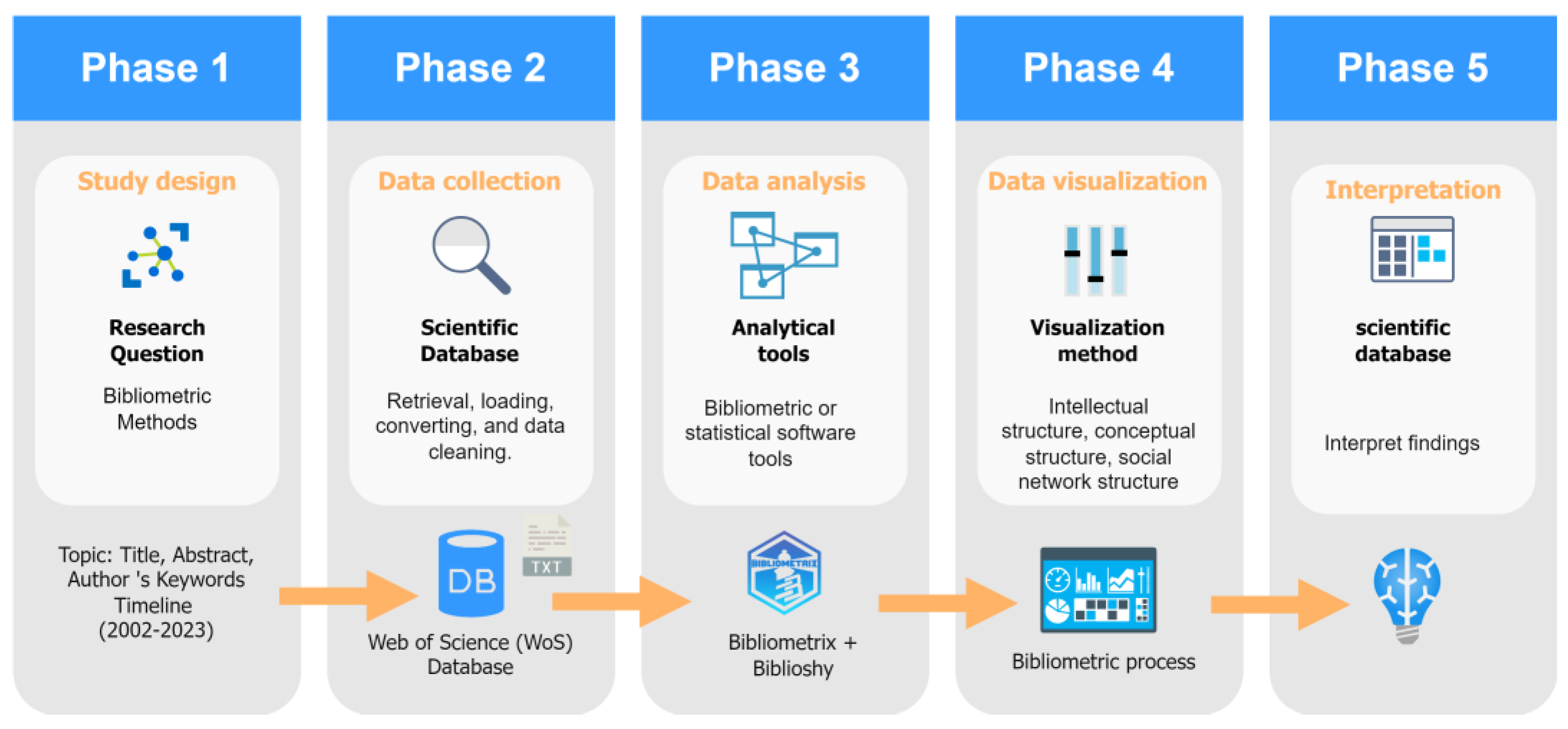
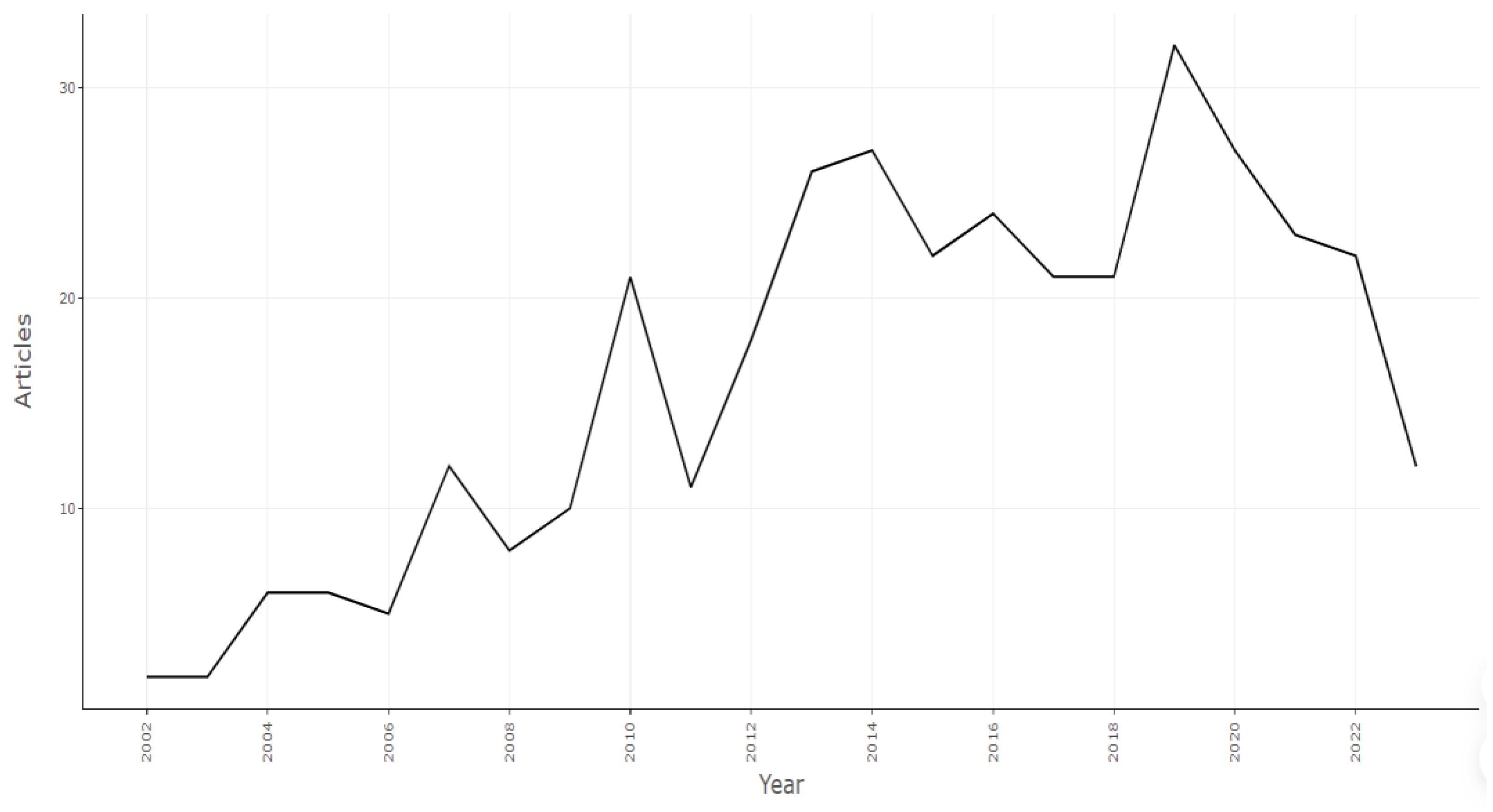
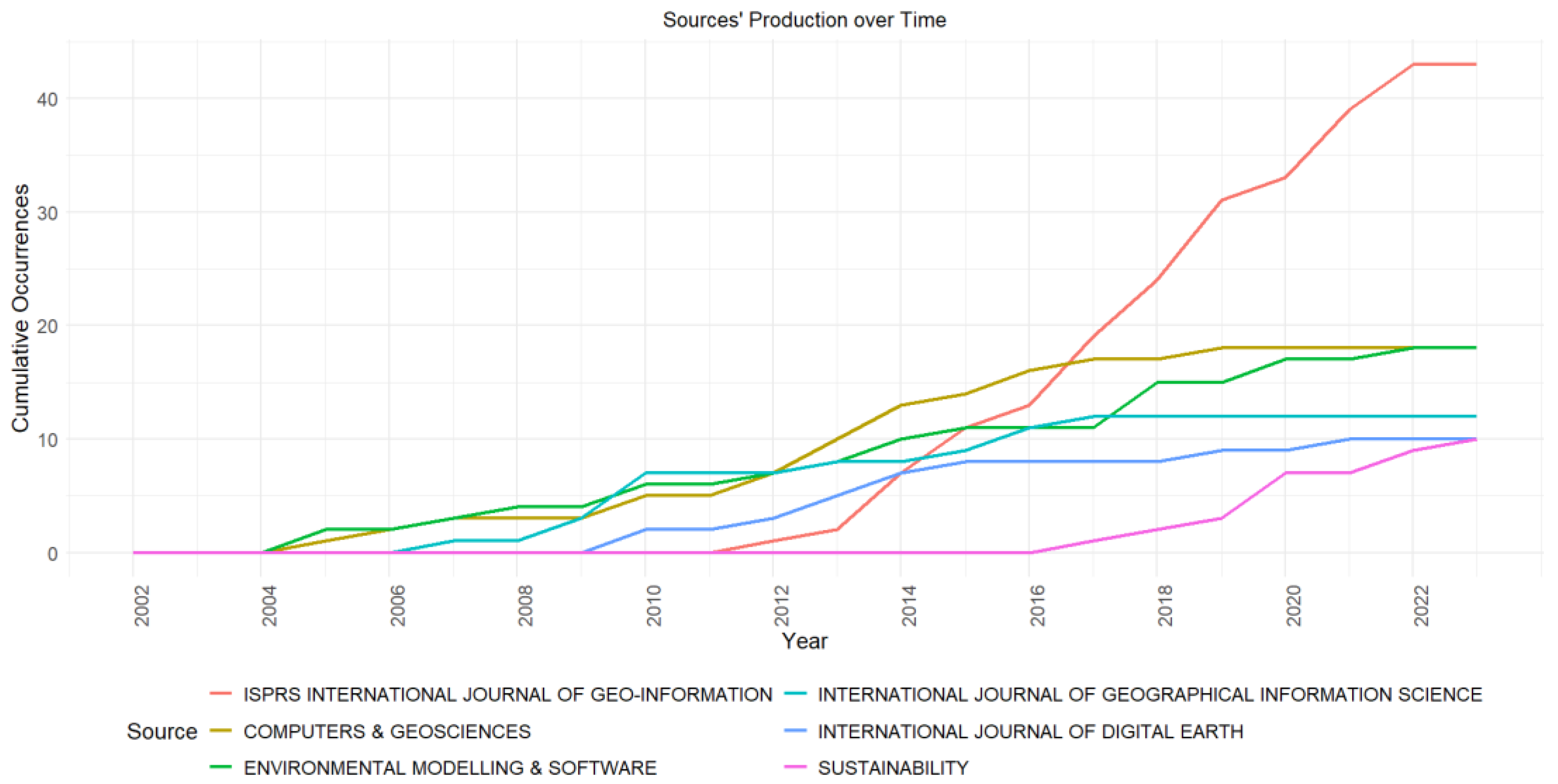

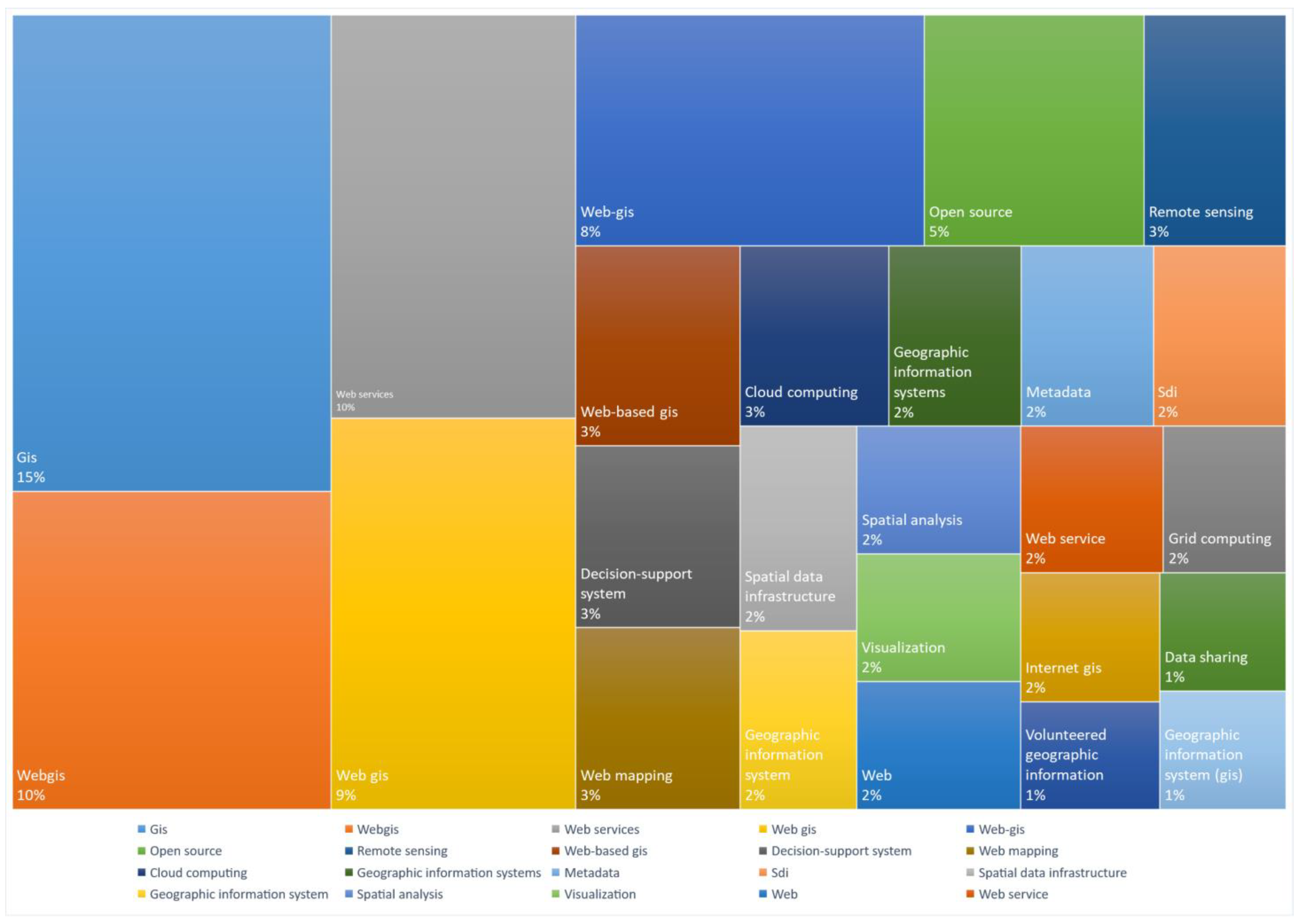

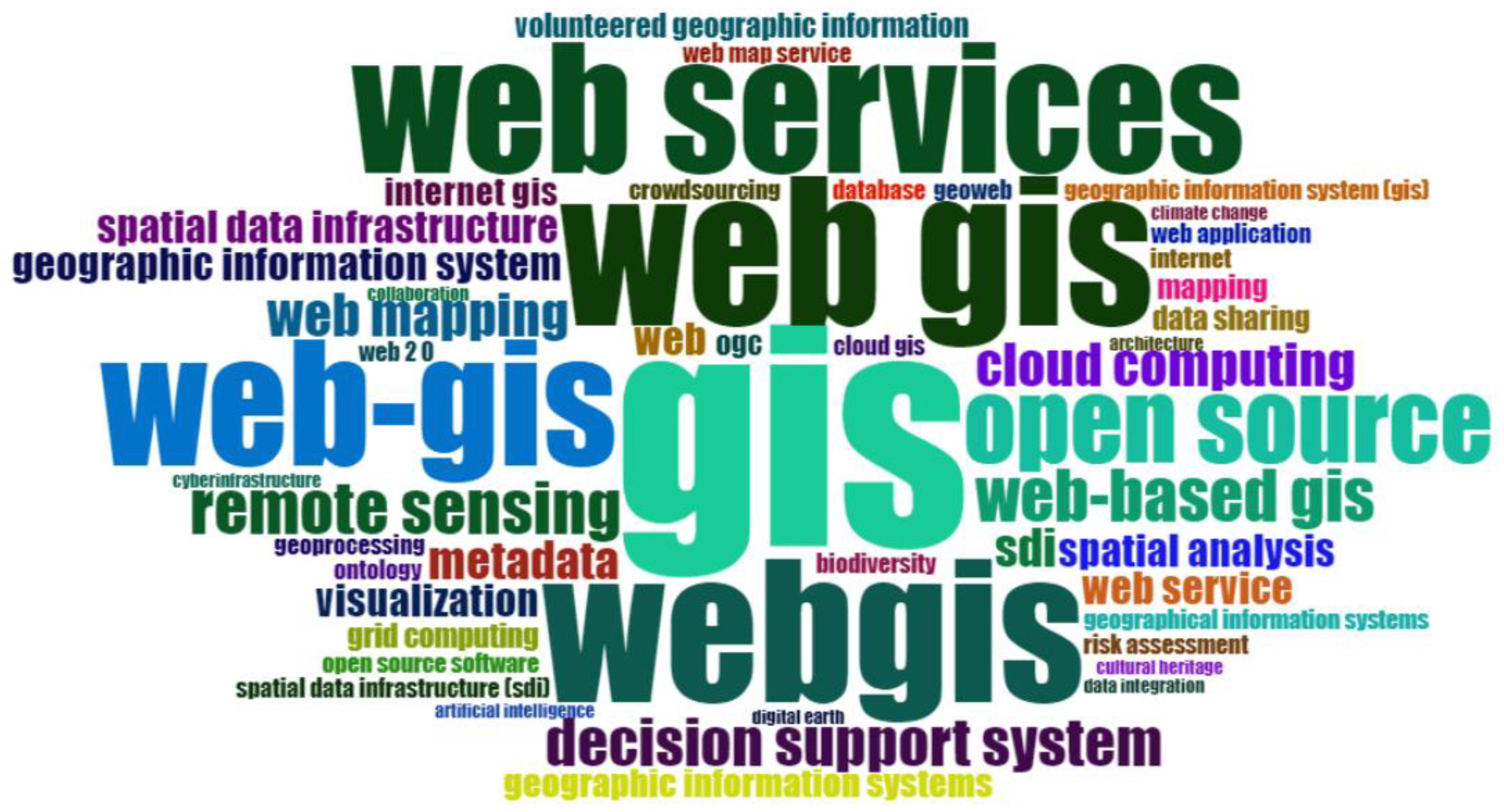
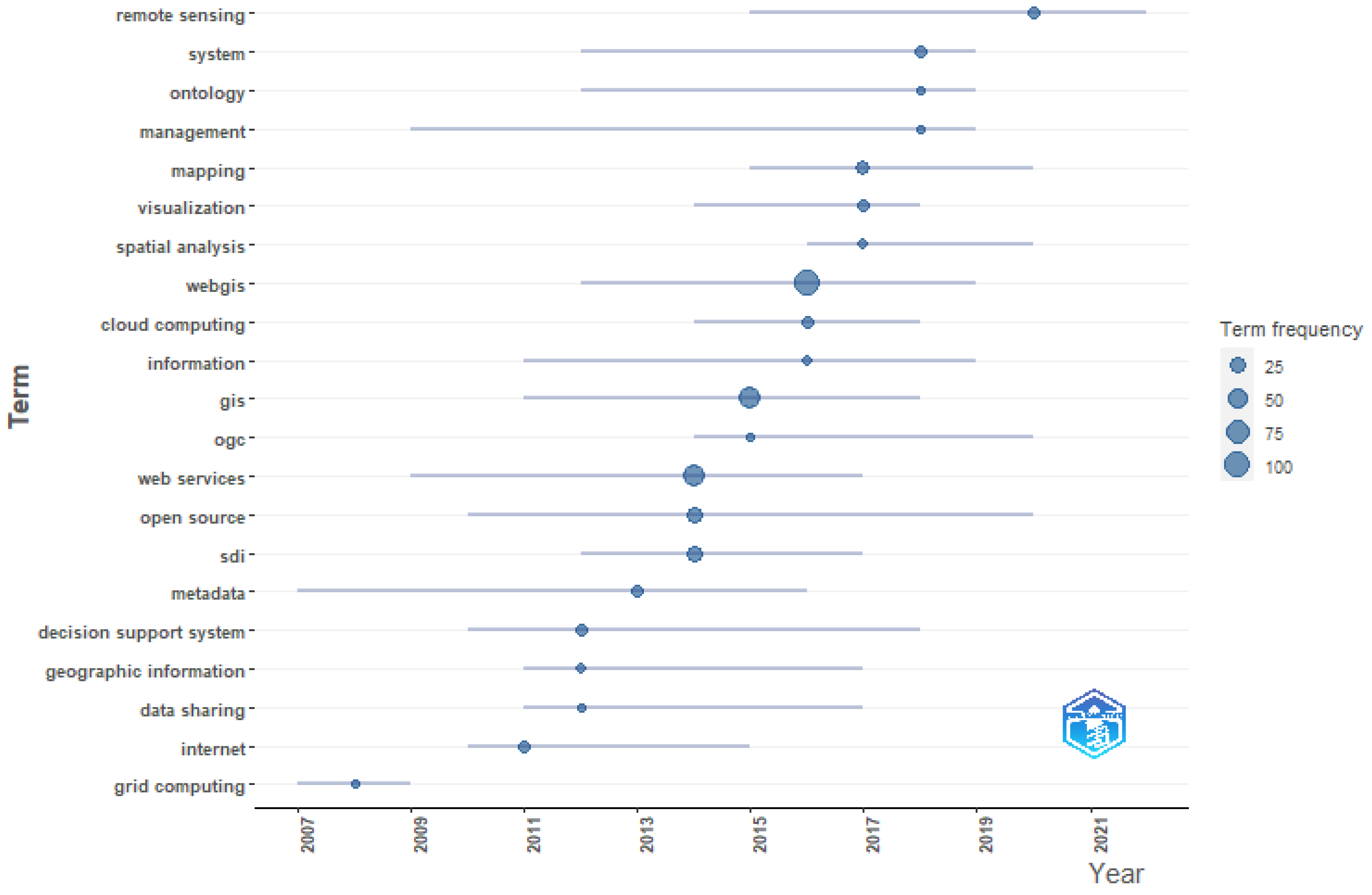
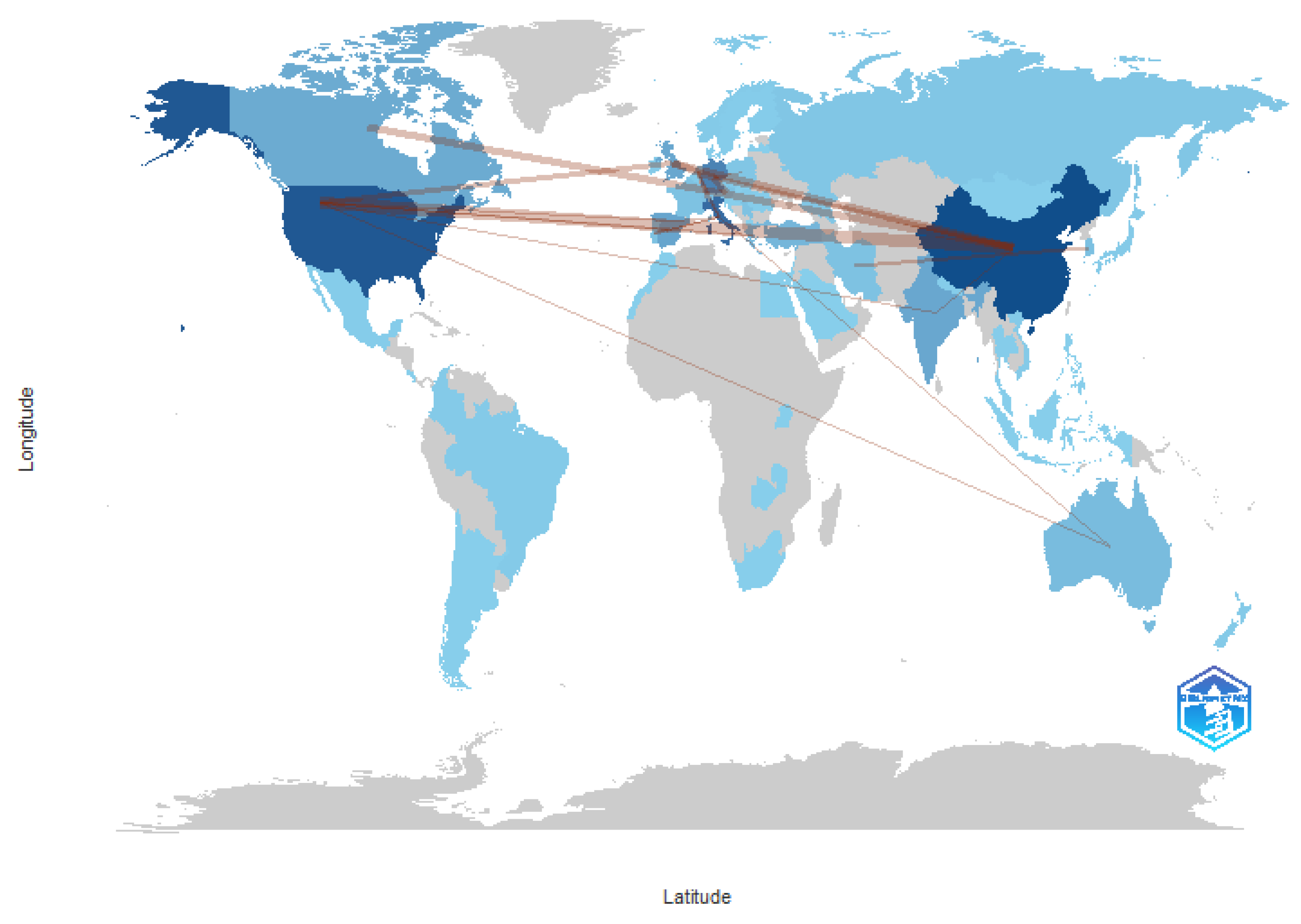
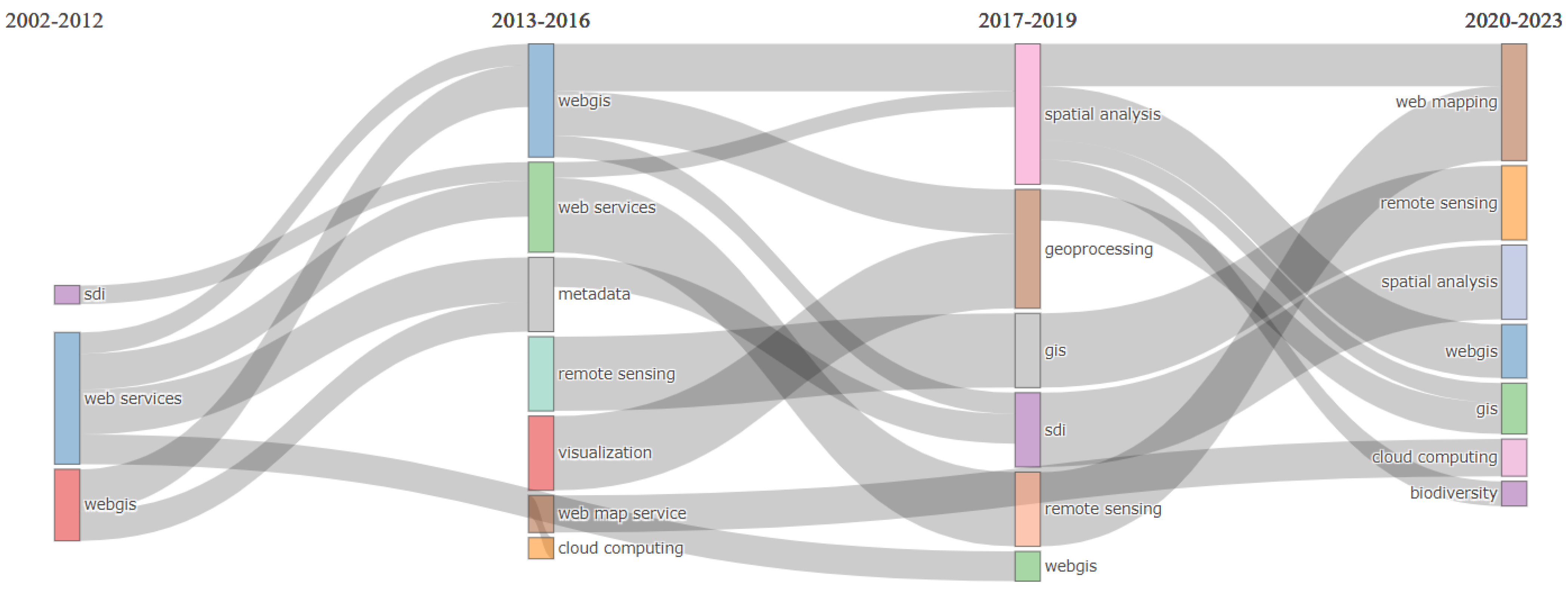
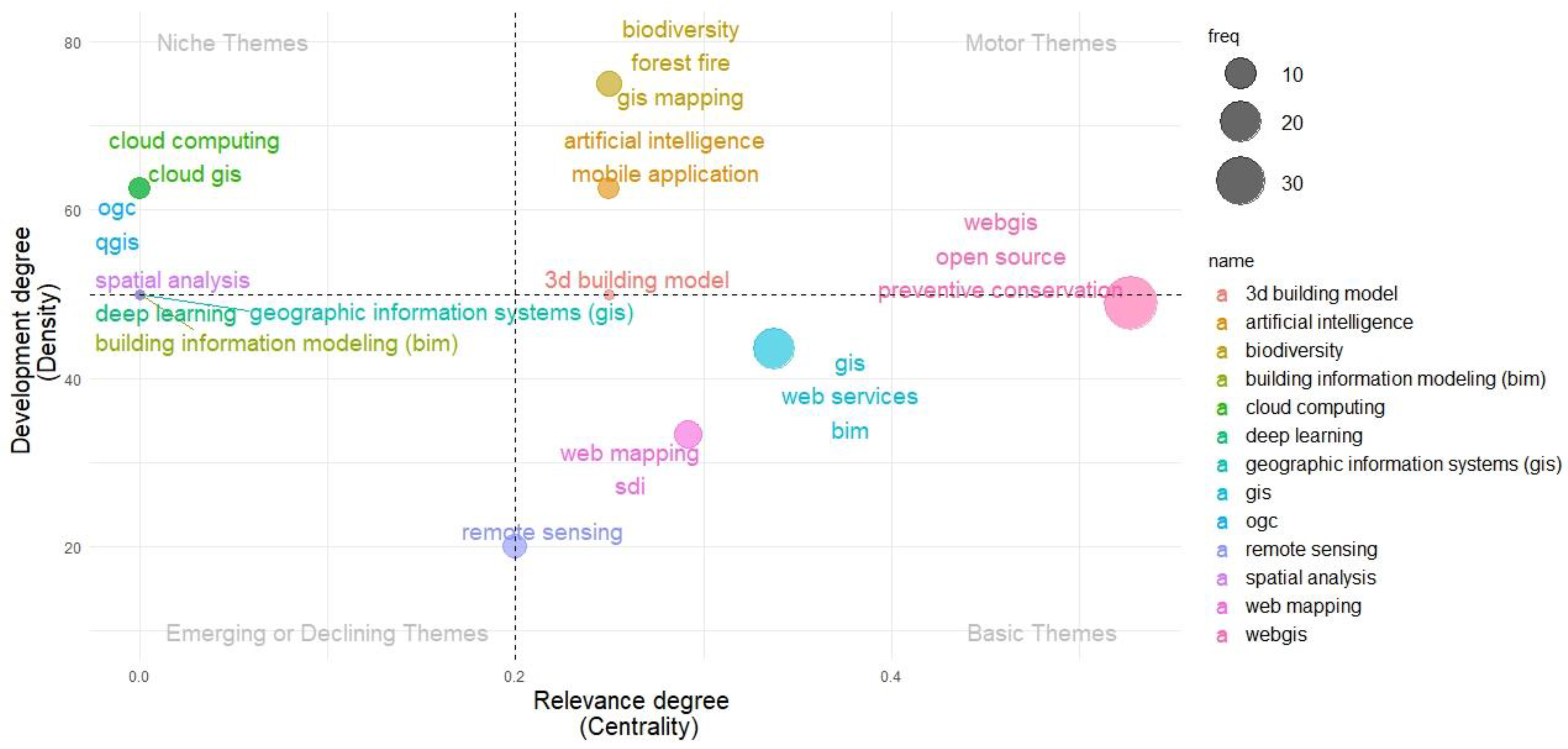
| Source | Year | Review Period | Database, Type of Documents | Number of Papers | Research Method | Tools Used | Scope |
|---|---|---|---|---|---|---|---|
| [59] | 2014 | 2003–2013 | SCOPUS, Web of Science (WoS), and PubMed: journal papers | 563 | Systematic literature review (SRL), including retrospective analysis methods to analyze past data and trends and backward snowballing method to add more references | Not provided | Understand how geographic information analysis methods are used to investigate malnutrition in Sub-Saharan Africa (SSA). Understand geographic data, spatial levels, and geo-information methods. Understand how GIScience uses geo-information analysis methods such as spatial interpolation, aggregation, and downscaling techniques. |
| [58] | 2014 | 2000–2013 | Geobase, PubMed, and Web of Science: journal papers | 58 | Systemic review: bibliographic search | Not provided | Development of indicators to analyze public health surveillance systems (WGPhSS) based on a web GIS, such as those for infectious diseases, and identification of geographical and performance inequalities. |
| [50] | 2019 | 2018 | Web of Science (WoS): journal papers | 242 | Bibliometric document co-citation analysis (DCA); keyword frequency, term frequency, and inverse document frequency (TF-IDF); and subject-clustering analysis | CiteSpace for joint citation analysis of bibliometric documentation (DCA) | Current status, limitations, and future directions in the field of quality of geographic information services (QOGis) compared with traditional quality of services (QoS) in distributed computing environments, such as web, SOA, and cloud computing. |
| [60] | 2019 | 2008–2018 | Web of Science (WoS): journal papers and conference papers | 76 | Bibliometric analysis: time series analysis, journal analysis, co-authorship analysis, co-occurrence analysis of keywords | VOSViewer for co-authorship and co-occurrence keyword analysis | Integration of building information modeling (BIM) and geographic information systems (GISs) in sustainable built environments. |
| [61] | 2021 | 2010–2020 | Web of Science (WoS): journal papers | 502 | Bibliometric analysis: citation, bibliographic linkage, co-citation or co-authorship relationships | VOSViewer for bibliometric analysis | Analysis of the impact of open-source GIS applications in different research areas in the last 10 years (2010–2020). |
| [62] | 2021 | 2010–2020 | Web of Science (WoS): journal papers | 111 | Bibliometric analysis, including publication analysis, journal analysis, co-occurring keyword analysis, co-authorship analysis, country analysis, institution analysis, and main groups of keywords | VOSViewer to perform a bibliometric analysis | To reveal research trends in building information modeling (BIM), GIS, and web integration and to discuss the challenges and potential opportunities of such integration in terms of the most common uses in construction. |
| [63] | 2022 | 1994–2020 | Web of Science (WoS): journal papers | 963 | Systematic review using quantitative bibliometric analysis with following indicators: number of publications (NP), total citation times (TC), year published (PY), the average number of citations per paper (CPP), author co-citation analysis (ACA), document co-citation analysis (DCA), co-word analysis (CA), and many other variations | Derwent (DDA) for literature analysis VOSViewer for bibliometric analysis | Open Geospatial Consortium (OGC) specifications; FAIR (findable, accessible, interoperable, and reusable) principles in geospatial data. |
| Protocol Elements | Authors’ Considerations |
|---|---|
| What is known? What are the research topics? | Geographic information systems are studied based on existing knowledge, and they currently have various purposes and fields of application. Owing to its wide application, development, and growth, it is possible to conduct a bibliometric study in which the contributions and applications of geographic information systems based on WebGIS architectures are investigated. |
| Limitations | The authors decided to search only the top scientific journals in the sciences, social sciences, arts, and humanities and to browse the entire citation network. |
| Restrictions by document type | The researchers specifically opted for peer-reviewed articles and reviews, deliberately excluding conference proceedings, books, and chapters. |
| Categories | For all categories, the researchers decided not to impose research restrictions on a particular scientific publication because of its relatively increasing scope, which is similar to the scope of this review. Thus, this review covers a wide range of topics and categories. |
| Component | Keywords | Boolean Equation per Component | Final Boolean Equation |
|---|---|---|---|
| webGIS | webGIS OR web-GIS OR “web-based GIS” OR “Web GIS” OR “web* mapping” OR Geoweb OR web services | (webGIS OR web-GIS OR “web-based GIS” OR “Web GIS” OR “web* mapping” OR Geoweb OR “web services”) | (webGIS OR web-GIS OR “web-based GIS” OR “Web GIS” OR “web* mapping” OR Geoweb OR web services) AND (“geographic* information syste*” OR “gis” OR “spatial data infrastructure”) AND (architecture OR technical OR cloud OR mobile OR software OR open source) |
| Geographic Information System | geographic* information syste*” OR “gis” OR “spatial data infrastructure | (“geographic* information syste*” OR “gis” OR “spatial data infrastructure”) | |
| Architecture | architecture OR technical OR cloud OR mobile OR software OR open source | (architecture OR technical OR cloud OR mobile OR software OR open source) |
| Criteria | Value | Final Documents |
|---|---|---|
| Topic (title, abstract, author’s keywords) | TS = (webGIS OR web-GIS OR “web-based GIS” OR “Web GIS” OR “web* mapping” OR Geoweb OR “web services”) AND TS = (“geographic* information syste*” OR “gis” OR “spatial data infrastructure”) AND TS = (architecture OR technical OR cloud OR mobile OR software OR open source) | 1764 results |
| Web of Science indices | SCI-EXPANDED, SSCI, A&HCI, CPCI-S only | 460 results |
| Source | Scientific journals only | 396 results |
| Categories | All categories without imposing restrictions on research | |
| Document type | Articles and review articles only | 391 results |
| Time space | 2002 to Sept. 2023 |
| Type | Description | Results |
|---|---|---|
| Main Information About Data | ||
| Period | Years of publication | 2002:2023 |
| Sources | Frequency distribution of sources as journals | 176 |
| Documents | Total number of documents | 358 |
| Annual growth rate % | Average number of annual growth | 8.91 |
| Document average age | Average age of the document | 7.82 |
| Average citations per doc | Average total number of citations per document | 18.38 |
| References | Total number of references or citations | 13,558 |
| Document Contents | ||
| Keywords Plus (ID) | Total number of phrases that frequently appear in the title of an article’s references | 653 |
| Author’s Keywords (DE) | Total number of keywords | 1383 |
| Authors | ||
| Authors | Total number of authors | 1383 |
| Authors of single-authored docs | Number of single authors per article | 14 |
| Author Collaborations | ||
| Single-authored docs | Number of documents written by a single author | 14 |
| Co-authors per doc | Average number of co-authors in each document | 4.22 |
| International co-authorships % | Average number of international co-authorships | 27.93 |
| Document Types | ||
| Article | Number of articles | 339 |
| Article; early access | Number of early access articles | 2 |
| Review | Number of review articles | 17 |
| Top 20 Sources | No. |
|---|---|
| ISPRS International Journal of Geo-Information | 43 |
| Environmental Modelling & Software | 20 |
| Computers & Geosciences | 19 |
| International Journal of Geographical Information Science | 12 |
| International Journal of Digital Earth | 10 |
| Sustainability | 10 |
| Remote Sensing | 8 |
| Natural Hazards and Earth System Sciences | 7 |
| Computers and Electronics in Agriculture | 6 |
| Ecological Informatics | 6 |
| Sensors | 6 |
| Water | 6 |
| Earth Science Informatics | 4 |
| GeoInformatica | 4 |
| ISPRS Journal of Photogrammetry and Remote Sensing | 4 |
| Natural Hazards | 4 |
| Science of the Total Environment | 4 |
| Annals of Geophysics | 3 |
| Applied Sciences-Basel | 3 |
| Arabian Journal of Geosciences | 3 |
| Number of Articles | Authors |
|---|---|
| 4 | (1) Derron, M.H. (2) Jaboyedoff, M. (3) Kulawiak, M. (4) Li, S. (5) Sayar A. |
| 3 | (6) Agrawal, S. (7) Aydin G. (8) Aye, ZC. (9) Brovelli, M.A. (10) Castelli, F. (11) Choi S.M. (12) Gonzalez-Aguilera D. (13) Gould M. (14) Granell C. (15) Grasso S. (16) Gupta, R.D. (17) Karnatak, H.C. (18) Lentini, V. (19) Li, Lin. (20) Liu, X. |
| Authors | Papers | Single Author | First Author | Dominance Factor (DF) | Rank by DF |
|---|---|---|---|---|---|
| Aye, Z.C. | 3 | 3 | 1.00 | 1 | |
| Karnatak, H.C. | 3 | 3 | 1.00 | 1 | |
| Akinci, H. | 2 | 2 | 1.00 | 1 | |
| Balla, D. | 2 | 2 | 1.00 | 1 | |
| Hofer, B. | 2 | 2 | 1.00 | 1 | |
| Kalabokidis, K. | 2 | 2 | 1.00 | 1 | |
| Kulawiak, M. | 4 | 3 | 0.75 | 7 | |
| Agrawal, S. | 3 | 2 | 0.67 | 7 | |
| Brovelli, M.A. | 3 | 2 | 0.67 | 7 | |
| Castelli, F. | 3 | 2 | 0.67 | 7 | |
| Denzer, R. | 2 | 1 | 0.50 | 11 | |
| Evangelidis, K. | 2 | 1 | 0.50 | 11 | |
| Flanagan, D.C. | 2 | 1 | 0.50 | 11 | |
| Fox, G.C. | 2 | 1 | 0.50 | 11 | |
| Govedarica, M. | 2 | 1 | 0.50 | 11 | |
| Gui, Z.P. | 2 | 1 | 0.50 | 11 | |
| Masciotta, M.G. | 2 | 1 | 0.50 | 11 | |
| Sayar, A. | 4 | 1 | 1 | 0.33 | 18 |
| Granell, C. | 3 | 1 | 0.33 | 18 |
| Authors | h_Index | g_Index | Mined | Total Citations | Total Papers | Year Start |
|---|---|---|---|---|---|---|
| Kulawiak M. | 4 | 4 | 0.286 | 91 | 4 | 2010 |
| Li S. | 4 | 5 | 0.444 | 111 | 5 | 2015 |
| Aydin G. | 3 | 3 | 0.167 | 33 | 3 | 2006 |
| Aye Z.C. | 3 | 3 | 0.333 | 55 | 3 | 2015 |
| Brovelli M.A. | 3 | 3 | 0.333 | 100 | 3 | 2015 |
| Castelli F. | 3 | 3 | 0.429 | 21 | 3 | 2017 |
| Derron M.H. | 3 | 3 | 0.333 | 55 | 3 | 2015 |
| Jaboyedoff M. | 3 | 3 | 0.333 | 55 | 3 | 2015 |
| Lentini V. | 3 | 3 | 0.429 | 21 | 3 | 2017 |
| Li J. | 3 | 4 | 0.273 | 39 | 4 | 2013 |
| Li X. | 3 | 3 | 0.214 | 80 | 3 | 2010 |
| Sayar A. | 3 | 4 | 0.167 | 34 | 4 | 2006 |
| Sun Y. | 3 | 3 | 0.333 | 45 | 3 | 2015 |
| Van. | 3 | 3 | 0.188 | 46 | 3 | 2008 |
| Wu H. | 3 | 3 | 0.333 | 74 | 3 | 2015 |
| Zhang L. | 3 | 3 | 0.3 | 44 | 3 | 2014 |
| Agrawal S. | 2 | 3 | 0.286 | 20 | 3 | 2017 |
| Akinci H. | 2 | 2 | 0.167 | 7 | 2 | 2012 |
| Aktas M.S. | 2 | 2 | 0.111 | 17 | 2 | 2006 |
| Author Keywords (Top 25) | Occurrences |
|---|---|
| Gis | 51 |
| Webgis | 34 |
| Web services | 33 |
| Web gis | 32 |
| Web-gis | 27 |
| Open source | 17 |
| Remote sensing | 11 |
| Web-based gis | 11 |
| Decision-support system | 10 |
| Web mapping | 10 |
| Cloud computing | 9 |
| Geographic information systems | 8 |
| Metadata | 8 |
| Sdi | 8 |
| Spatial data infrastructure | 8 |
| Geographic information system | 7 |
| Spatial analysis | 7 |
| Visualization | 7 |
| Web | 7 |
| Web service | 7 |
| Grid computing | 6 |
| Internet gis | 6 |
| Volunteered geographic information | 5 |
| Data sharing | 5 |
| Geographic information system (gis) | 5 |
| Ranking No. | Authors and Their Sources (Top 20) | Total Citations (Number of Citations Received) | Total Citations per Year | Total Citations Normalized |
|---|---|---|---|---|
| 1 | Gröger G, 2012, ISPRS Journal of Photogrammetry and Remote Sensing | 344 | 28.667 | 7.354 |
| 2 | Fang S, 2014, 1596, IEEE Transactions on Industrial Informatics | 290 | 29.000 | 9.321 |
| 3 | Raup B, 2007, Global and Planetary Change | 271 | 15.941 | 5.212 |
| 4 | Simão A, 2009, Journal of Environmental Management | 161 | 10.733 | 3.667 |
| 5 | Granell C, 2010, Environmental Modelling & Software | 147 | 10.500 | 5.406 |
| 6 | Ames DP, 2012, Environmental Modelling & Software | 121 | 10.083 | 2.587 |
| 7 | Lhomme S, 2013, Natural Hazards and Earth System Sciences | 102 | 9.273 | 5.446 |
| 8 | Hagemeier-Klose M, 2009, Natural Hazards and Earth System Sciences | 95 | 6.333 | 2.164 |
| 9 | Newman G, 2010, International Journal of Geographical Information Science | 89 | 6.357 | 3.273 |
| 10 | Evangelidis K, 2014, Computers & Geosciences | 89 | 8.900 | 2.861 |
| 11 | Grassi S, 2012, Energy Policy | 88 | 7.333 | 1.881 |
| 12 | Tarjuelo JM, 2015, Agricultural Water Management | 81 | 9.000 | 4.154 |
| 13 | Rao M, 2007, Environmental Modelling & Software | 77 | 4.529 | 1.481 |
| 14 | El-Mekawy M, 2012, ISPRS International Journal of Geo-Information | 74 | 6.167 | 1.582 |
| 15 | Flemons P, 2007, Ecological Informatics | 71 | 4.176 | 1.365 |
| 16 | Hall GB, 2010, International Journal of Geographical Information Science | 69 | 4.929 | 2.538 |
| 17 | Kulkarni AT, 2014, Computers & Geosciences | 67 | 6.700 | 2.154 |
| 18 | Yue P, 2015, Environmental Modelling & Software | 66 | 7.333 | 3.385 |
| 19 | Karnatak HC, 2007, Geoinformatica | 62 | 3.647 | 1.192 |
| 20 | Martinis S, 2013, Remote Sensing | 57 | 5.182 | 3.043 |
| Country | Total Number of Articles |
|---|---|
| China | 229 |
| Italy | 166 |
| USA | 164 |
| Germany | 93 |
| India | 64 |
| Spain | 62 |
| United Kingdom | 46 |
| Canada | 39 |
| Greece | 38 |
| Turkey | 35 |
| Australia | 24 |
| Country | Total Citations | Average Article Citations |
|---|---|---|
| USA | 1415 | 30.80 * |
| China | 886 | 15.30 |
| Germany | 754 | 27.90 |
| Italy | 547 | 11.60 |
| Spain | 449 | 26.40 |
| United Kingdom | 390 | 27.90 |
| Greece | 263 | 23.90 |
| Switzerland | 229 | 28.60 |
| India | 225 | 11.80 |
| Turkey | 162 | 12.50 |
| Australia | 139 | 19.90 |
| Canada | 136 | 12.40 |
| France | 126 | 42.00 * |
| Poland | 83 | 20.80 |
| Netherlands | 79 | 15.80 |
| Iran | 76 | 10.90 |
| Sweden | 74 | 37.00 * |
| New Zealand | 69 | 69.00 * |
Disclaimer/Publisher’s Note: The statements, opinions and data contained in all publications are solely those of the individual author(s) and contributor(s) and not of MDPI and/or the editor(s). MDPI and/or the editor(s) disclaim responsibility for any injury to people or property resulting from any ideas, methods, instructions or products referred to in the content. |
© 2024 by the authors. Licensee MDPI, Basel, Switzerland. This article is an open access article distributed under the terms and conditions of the Creative Commons Attribution (CC BY) license (https://creativecommons.org/licenses/by/4.0/).
Share and Cite
Vinueza-Martinez, J.; Correa-Peralta, M.; Ramirez-Anormaliza, R.; Franco Arias, O.; Vera Paredes, D. Geographic Information Systems (GISs) Based on WebGIS Architecture: Bibliometric Analysis of the Current Status and Research Trends. Sustainability 2024, 16, 6439. https://doi.org/10.3390/su16156439
Vinueza-Martinez J, Correa-Peralta M, Ramirez-Anormaliza R, Franco Arias O, Vera Paredes D. Geographic Information Systems (GISs) Based on WebGIS Architecture: Bibliometric Analysis of the Current Status and Research Trends. Sustainability. 2024; 16(15):6439. https://doi.org/10.3390/su16156439
Chicago/Turabian StyleVinueza-Martinez, Jorge, Mirella Correa-Peralta, Richard Ramirez-Anormaliza, Omar Franco Arias, and Daniel Vera Paredes. 2024. "Geographic Information Systems (GISs) Based on WebGIS Architecture: Bibliometric Analysis of the Current Status and Research Trends" Sustainability 16, no. 15: 6439. https://doi.org/10.3390/su16156439
APA StyleVinueza-Martinez, J., Correa-Peralta, M., Ramirez-Anormaliza, R., Franco Arias, O., & Vera Paredes, D. (2024). Geographic Information Systems (GISs) Based on WebGIS Architecture: Bibliometric Analysis of the Current Status and Research Trends. Sustainability, 16(15), 6439. https://doi.org/10.3390/su16156439









